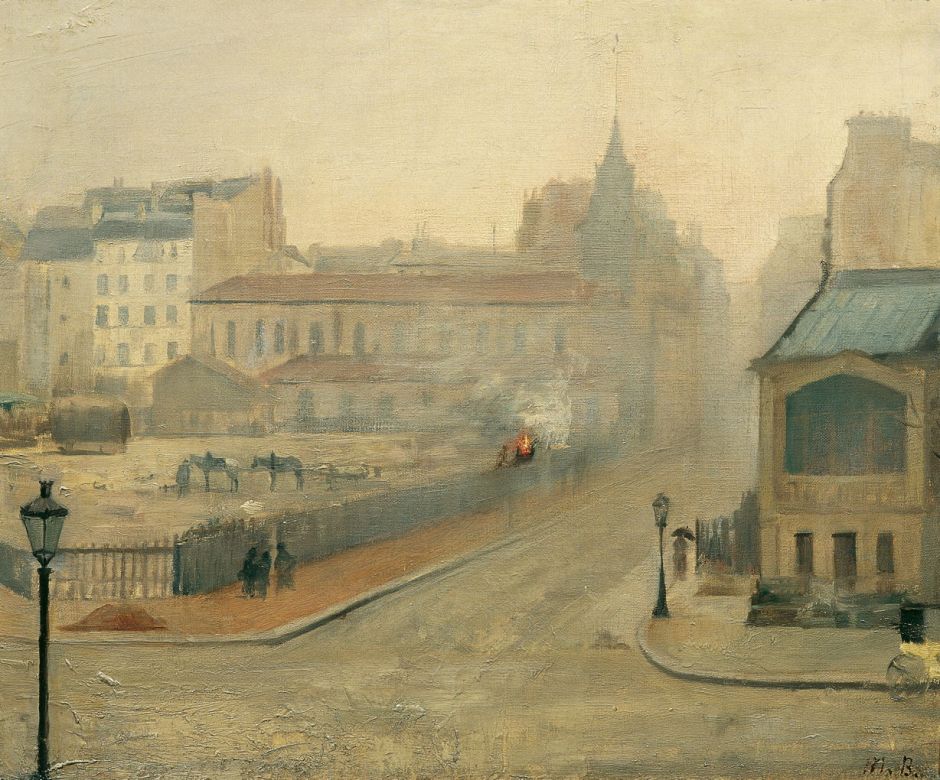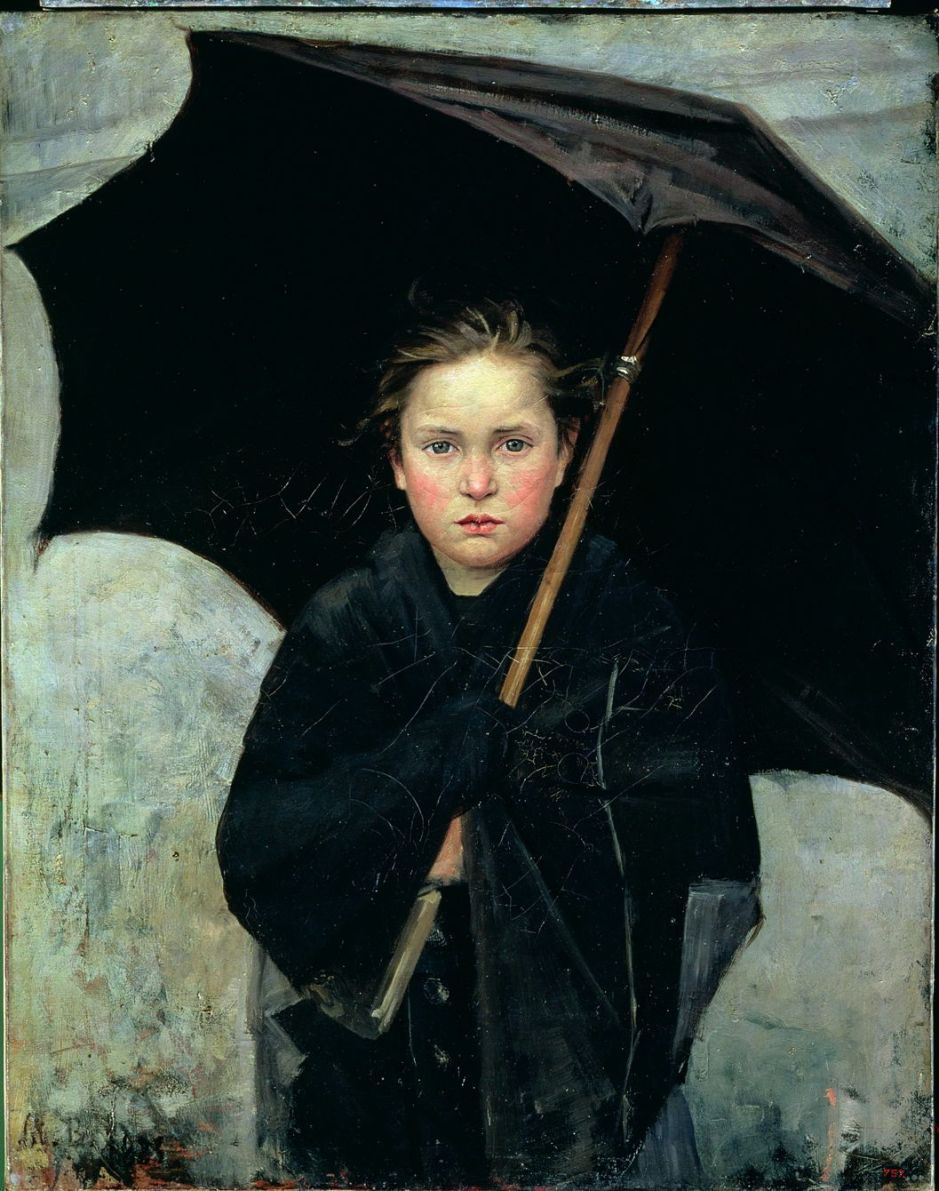Art knows no borders, but painters and paintings have locations and locale, which sometimes prove misleading. If I were to tell you that Rubens was a Spanish artist, you’d be quick to correct me, but he was brought up, trained and was based in the city of Antwerp, at that time in the Spanish Netherlands, a colony of Spain. Yet you’d probably think of Ilya Repin as a Russian artist, although he was born and brought up in the town of Chuhuiv in Kharkiv Oblast of Ukraine, and didn’t settle in Russia until he was nineteen.
Today’s artist from Ukraine is also generally assumed to have been Russian, but she was born and brought up in the middle of Ukraine: Marie Bashkirtseff (1858–1884), or perhaps Mariya Bashkirtseva, or Maria Konstantinovna Bashkirtseva. She was born to an affluent and noble family in Havrontsi (Gavrontsi), to the north of Poltava in central Ukraine, between Kyiv and Kharkiv, where she first started to learn to draw and paint.
Her parents split up when she was twelve, following which she travelled around Europe with her mother, eventually settling in Paris. She originally hoped to be a singer, but after an illness ruined her voice, she decided to be an artist. She then studied with Robert-Fleury from 1877, and at the Académie Julian, in Paris.

A self-assured painter from the beginning, she set her sights high and had the ability and drive to paint very well indeed. Her early Self-portrait with Palette (1880) was painted in the same year that she first had a painting accepted for exhibition at the Paris Salon, and she was successful again in each subsequent year until her death.

While still studying at the Académie Julien, she painted In the Studio (1881), which gives clear insight into what her training was like. Her class was of course entirely female, and the Académie Julien was one of the few reputable schools which accepted women pupils at that time. The artist is seated in the centre foreground, holding her palette and knife as she looks up at one of her fellow pupils.

Her early portraits were skilful if conventional, as is The Artist’s Sister from 1881. She started to establish herself in the art scene; it has been claimed that she wrote a column for the mysandrist newspaper La Citoyenne under the name of Pauline Orrel, but this appears to be unsupported by the original edited versions of her diaries.
When she was visiting Nice in 1882, she became a close friend of Jules Bastien-Lepage, and he acted as her mentor if not teacher, as she described herself as his pupil. She also formed a close friendship with the writer Guy de Maupassant.

As she developed a more distinctive style in her portraits, so her brushwork loosened. She was an astute observer of women’s life, as shown in At a Book (c 1882), with its emphasis on the model’s unusual hair.

Young Russian Girl (c 1882) is another delicate portrait, although I suspect the original isn’t as soft-focus as this image.

Although Bashkirtseff accepted that her mentor Bastien-Lepage reigned supreme in the countryside, she felt that she was his match when it came to depicting the urban environment of Paris. In the Mist from 1882 is a good demonstration of how well she captures the almost deserted city streets on a foggy day, with a bright plume of flame from a fire in the centre of her canvas.

Autumn, from 1883, is an impressive and Impressionist depiction of a row of trees on the bank of the River Seine in the centre of Paris, but is unusual in being devoid of people. The leaf litter, occasional rubbish, and fallen bench strengthen its feeling of desolation in the midst of the bustling city.

Bastien-Lepage’s compromise of detailed realism blended with more painterly passages shows in one of her best portraits, The Umbrella (1883). This girl’s tenacious stare at the viewer quickly becomes quite unnerving. That year she was awarded an honourable mention for her painting in the Salon.

A Meeting (1884) finally justified her claim to paint the urban poor, and to match Bastien-Lepage. This painting was a great success when shown at the Salon in that year, and is probably her greatest work.

Her pastel Portrait of Madame X (1884), in the Musée d’Orsay together with A Meeting, was also shown in the Salon that year.
By the summer of that year, Bashkirtseff’s fragile health was deteriorating rapidly because of tuberculosis. She died on 31 October, less than a month before she would have turned twenty-six, and less than three months before her mentor, Jules Bastien-Lepage, also died.
Her ambition was better fulfilled after her death than in life. Her huge mausoleum in Cimitière de Passy, Paris, designed by Jules Bastien-Lepage’s younger brother Émile, contains her artist’s studio complete with an unfinished painting of Holy Women by the Grave. Three years later, her copious and revelatory diaries were published, and propelled her to international fame.
References
Wikipedia.
An English translation of her journal, on archive.org.

